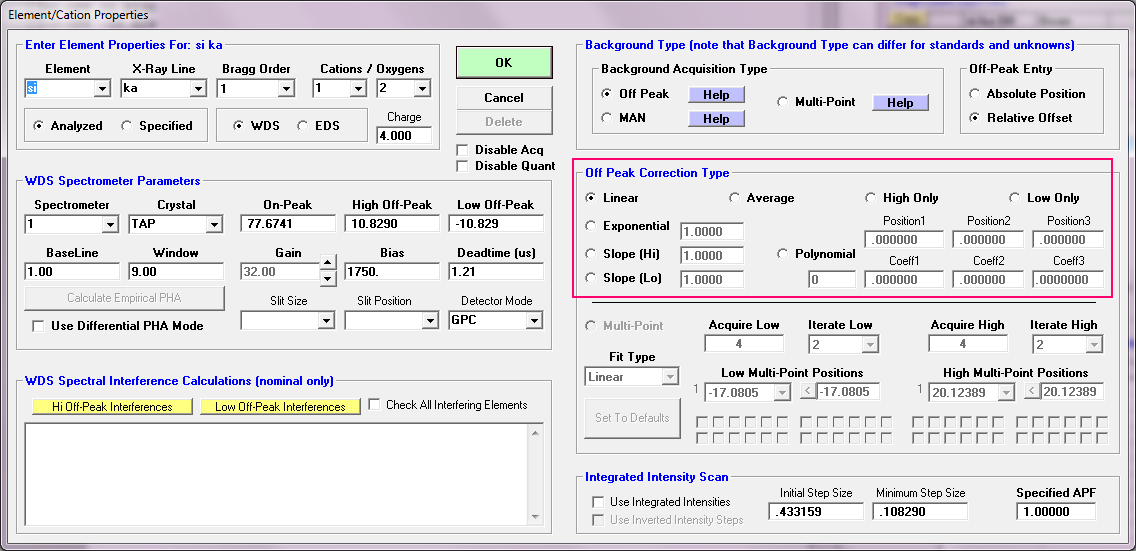Hi John,
A 2-part question:
i) Am I right in assuming that, if I've used an exponential background for the sample setup in PfE, CalcImage also uses this for the map quantification?
ii) Can you tell me the equation to manually calculate an exponential background from asymmetric bg positions please?
Mike
Hi Mike,
Yes, that is correct.
Whatever background fit model is assigned from the Elements/Cations dialog (in Probe for EPMA), that is the same background model that will be utilized in CalcImage for performing the background correction (and subsequent quantification) of x-ray maps.
Of course I know you know this already, but for the benefit of others it is worth pointing out that one can also change their minds post acquisition, and specify any of the other off-peak background models for quantification (in Probe for EPMA or CalcImage) as seen here:

Just for fun here's a nasty background requiring the exponential background fit:
https://probesoftware.com/smf/index.php?topic=68.msg7072#msg7072Of course that means that one also will have had to acquire off-peak x-ray maps in Probe Image (or the JEOL or Cameca software) at the specified background positions as seen here:
https://probesoftware.com/smf/index.php?topic=103.msg380#msg380Of course this is why we usually utilize the MAN background method, because then the background intensity is obtained from the standard calibration curves, without the need for acquisition of off-peak x-ray maps.
Also note that one can perform MAN background corrections by utilizing off-peak acquired standards as described here:
https://probesoftware.com/smf/index.php?topic=4.msg189#msg189As for the exponential fit equation, that can be found in our 2011 Amer. Min paper here:
https://epmalab.uoregon.edu/pdfs/3631Donovan.pdfSee equations 1, 2 and 3. It's a bit complicated as you can see! I'm sure someone could come up with a better model, but it's very versatile.
john